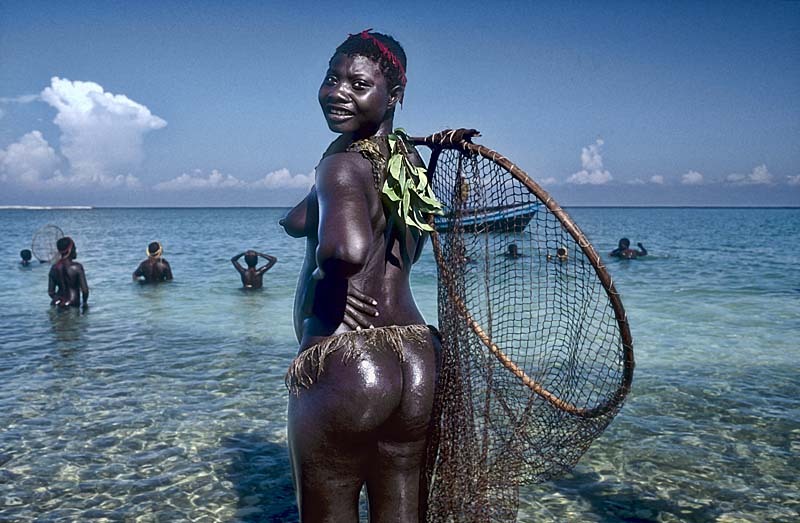
Jarawa people of the Andaman Islands
The Andaman Islands are home to the only known paleolithic people, the Sentinelese people, who have had no contact with any other people.
Early inhabitants
The Andaman islands have been inhabited for several thousand years, at the very least. The earliest archaeological evidence yet documented goes back some 2,200 years; however, the indications from genetic, cultural and isolation studies suggests that the islands may have been inhabited as early as the Middle Paleolithic. The indigenous Andamanese people appear to have lived on the islands in substantial isolation from that time until the 18th century CE.The Andamans are theorized to be a key stepping stone in a great coastal migration of humans from Africa via the Arabian peninsula, along the coastal regions of the Indian mainland and towards Southeast Asia, Japan and Oceania.
The name of the Andaman Islands is ancient. A theory that became prevalent in the late 19th century is that it derives from Andoman, the Malay form of Hanuman, the Sanskrit name of the Indian God.
Chola empire
From 800 to 1200 CE, the Tamil Chola dynasty created an empire that eventually extended from southeastern peninsular India to parts of Malaysia. Rajendra Chola I (1014 to 1042 CE) took over the Andaman and Nicobar Islands and maintained them as a strategic naval base to launch a naval expedition against the Srivijaya empire (a Hindu-Malay empire based on the island of Sumatra, Indonesia).
Maratha empire
The Maratha admiral Kanhoji Angre used the Andamans as a base and "fought the British off these islands until his death in 1729."Of the people who live in the Andaman Islands, a small minority of about 1,000 are the so-called Andamanese, the aboriginal inhabitants (adivasi) of the islands. By the 1850s when they first came into sustained contact by outside groups, there were estimated 7,000 Adamanese, divided into the following major groups:
Great Andamanese
Jarawa
The Jarawa (also Järawa, Jarwa) are one of the Adivasi indigenous peoples of the Andaman Islands in India. Their present numbers are estimated at between 250–400 individuals. Since they have largely shunned interactions with outsiders, many particulars of their society, culture and traditions are poorly understood. Their name means "people of the earth" or "hostile people" in Aka-Bea.
Along with other indigenous Andamanese peoples, they have inhabited the islands for at least several thousand years, and most likely a great deal longer. The Andaman Islands have been known to outsiders since antiquity; however, until quite recent times they were infrequently visited, and such contacts were predominantly sporadic and temporary. For the greater portion of their history their only significant contact has been with other Andamanese groups; the experience of such a lengthy period of isolation almost completely lacking in external cultural influences is equalled by few other groups in the world.[citation needed]
There is some indication that the Jarawa regarded the now-extinct Jangil tribe as a parent tribe from which they split centuries or millennia ago, even though the Jarawa outnumbered (and eventually out-survived) the Jangil.[2] The Jangil (also called the Rutland Island Aka Bea) were presumed extinct by 1931.[3]
The Jarawa are a designated Scheduled Tribe
Jangil (or Rutland Jarawa)
Onge
Sentinelese
As the numbers of settlers from the mainland increased (at first mostly prisoners and involuntary indentured laborers, later purposely recruited farmers), these indigenous people lost territory and numbers in the face of punitive expeditions by British troops, land encroachment and various epidemic diseases. Presently, there remain only approximately 400–450 indigenous Andamanese. The Jangil were soon extinct. The Great Andamanese were originally 10 distinct tribes with 5,000 people in total; most of the tribes are extinct, and the survivors, now just 52, speak mostly Hindi.[32] The Onge are reduced to less than 100 people. Only the Jarawa and Sentinelese still maintain a steadfast independence and refuse most attempts at contact; their numbers are uncertain but estimated to be in the low hundreds.

Jarawa

Jarawa


No comments:
Post a Comment